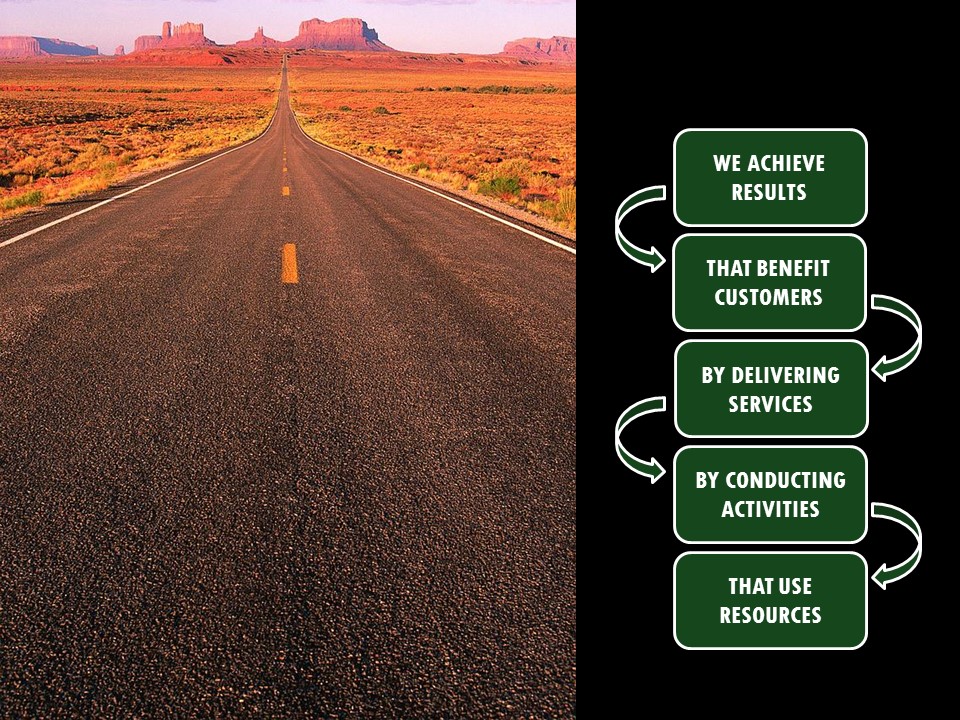
Today’s Morning Buzz is by Brent Stockwell – connect with him on LinkedIn and Twitter!!!
What I’m Listening To: True Colors (feat. Maya Avedis) by XO Cupid (2018)
What I’m Reading: The Strange Case of the Alchemist’s Daughter by Theodora Goss (2017)
(Because Kendra Davis recommended it in her Oct. 29 Morning Buzz)
What I’m Watching: Just finished Derry Girls Season Two on Netflix (2019)
Management author Patrick Lencioni had this to say about managing organizations and teams:
“..the only measure of a great team – or a great organization – is whether it accomplishes what it sets out to accomplish.”
In other words, you may be highly trained, highly skilled, have high morale, or even be extremely busy, but if you’re not – if we’re not — accomplishing what we set out to do – we’re not truly successful. (Unlike Andy Dwyer below!)

To help us all be more successful at identifying what we are trying to accomplish, I thought I would share a tool I’ve used how to better understand how the resources that we use logically (should) end up in the results we are trying to accomplish.
I developed this a few years ago because it seemed like I was having conversation after conversation with staff that were complaining that they couldn’t do what they wanted because they had fewer resources and staff than they did before the Great Recession. They were focusing more on the resources than the results.
I remember saying in frustration,
“Don’t tell me what you can’t do with what you don’t have… tell me what you can do with what you do have!”
So I went out and started to try and understand what tools existed for solving this problem and helping them better understand how resources are needed because of the results they help achieve. A colleague suggested that I look into logic models. The RAND Corporation is a nonprofit institution funded 70 years ago that helps improve policy and decision-making through research and analysis. According to RAND, “A logic model typically offers a simplified visual representation of the path of a program’s operations, starting with inputs and then progressing to the program’s activities, its outputs, its customers, and its intended outcomes.”
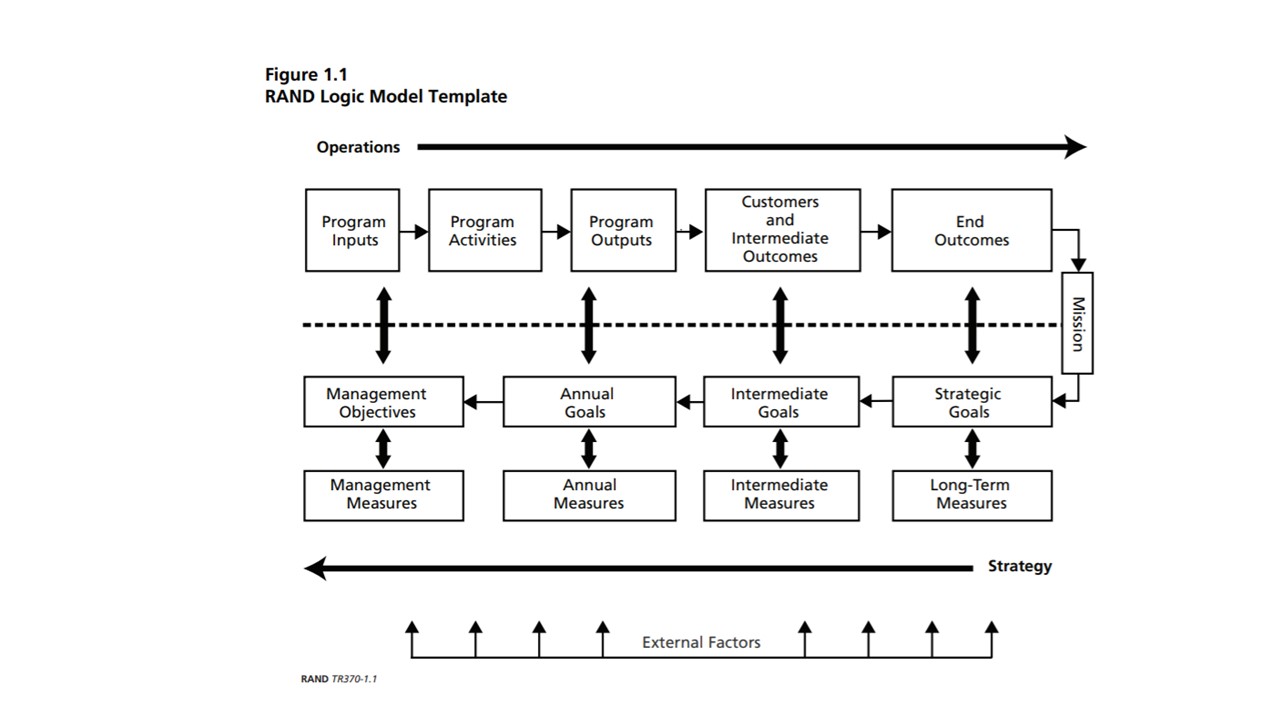
When I looked at their logic model, I saw how this could be helpful for easily demonstrating how resources (inputs) flow into results (outcomes). But I also recognized it needed to be simplified, so we could apply it more rapidly in practice.
So I broke it down into a few core pieces to focus on what matters most.
It seemed that we only really needed five key steps. These five steps could be summarized in a results-focused sentence:
“We achieve results that benefit customers by delivering services by conducting activities that use resources.”
The model shows how the resources we use logically end up in the results we’re trying to achieve (or more accurately how the results we’re trying to achieve logically require the resources we need to use). Each step is measurable as well.
So, imagine you’re going on a journey. You need to pick a destination, figure out what you want to do, decide on the best vehicle to get you there, and ensure that you have enough fuel to get there.
You use these resources, to conduct activities, to deliver services (these are all completed within the organization). To benefit customers, to achieve results (these are all customer-focused – outside the organization).
This helps demonstrate the relationship between resources (inputs), activities, and services (outputs) with desired results (outcomes). The exact terms don’t really matter, they can be adjusted to whatever you call them in your organization, it’s the concept that’s most important.
If your work is primarily administrative or support focused, you may wonder how the model works for what you do. Internal services primarily help public services achieve results by creating resources that the public services can use to provide to external customers to achieve results.
In other words, support services use resources to conduct activities to deliver services that result in resources for public services, and so on and so forth.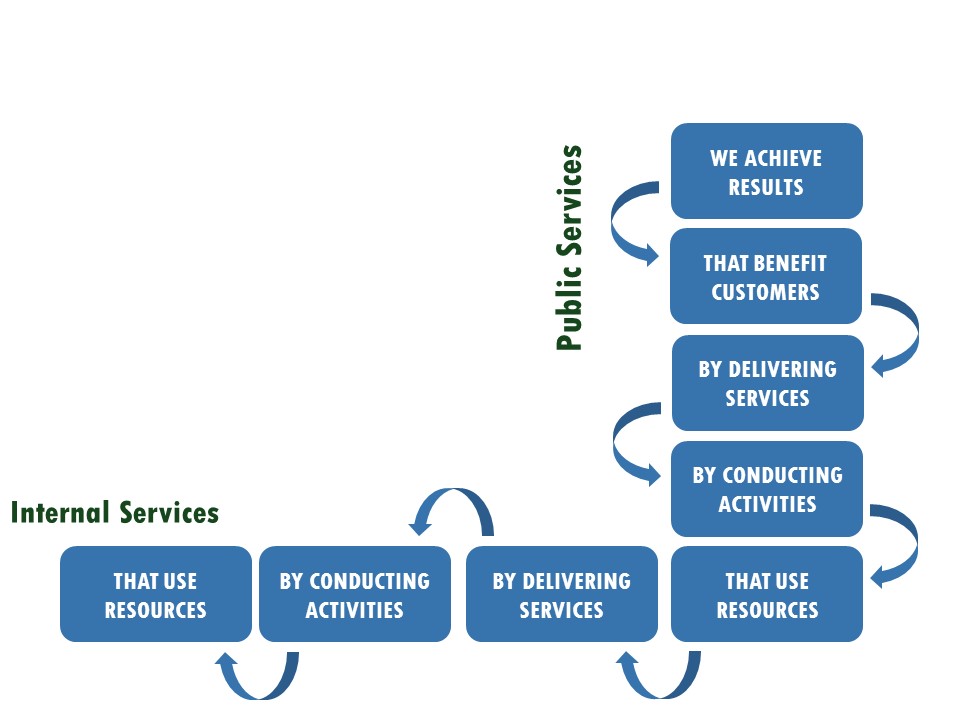
To make this practical, in the trash and recycling area, they use drivers and trucks, to drive to each house twice a week, to collect refuse and recycling, from every resident’s curb or alley; to encourage a clean, sustainable environment.
When I first started using this model I started from the bottom up, but realized along the way that it was more important to “start with why” and begin with the end in mind — the results statement.
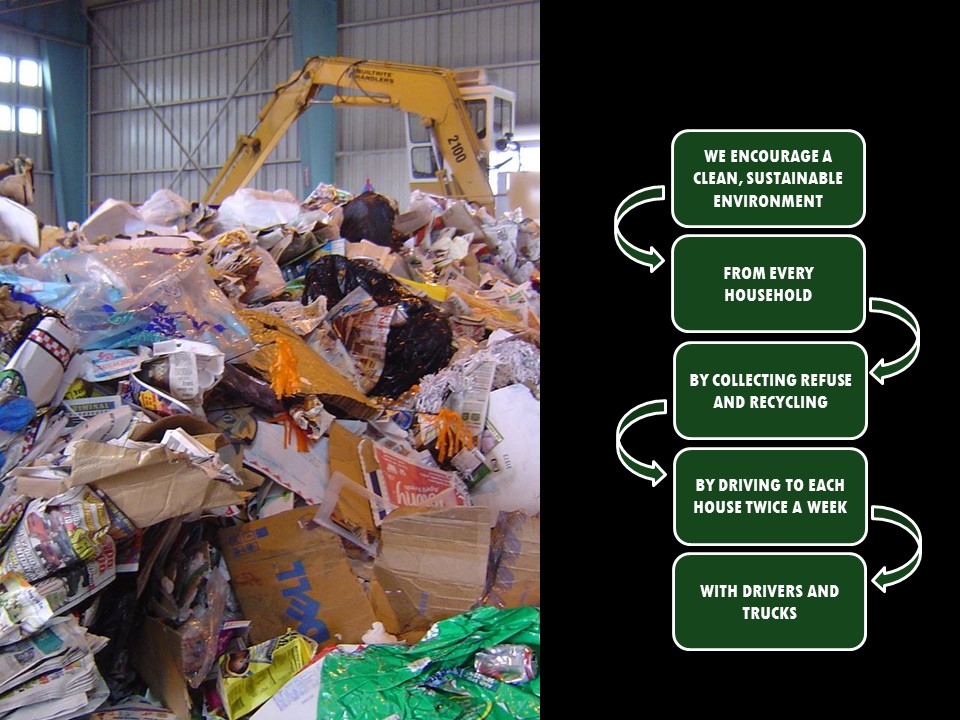
Here are more examples:
Trash and Recycling with Fleet Support – We encourage a clean, sustainable environment, from every household, by collecting refuse and recycling, by driving to each house twice a week, with drivers and trucks, that are kept operating effectively, by repairing and maintaining vehicles, with techs and tools.
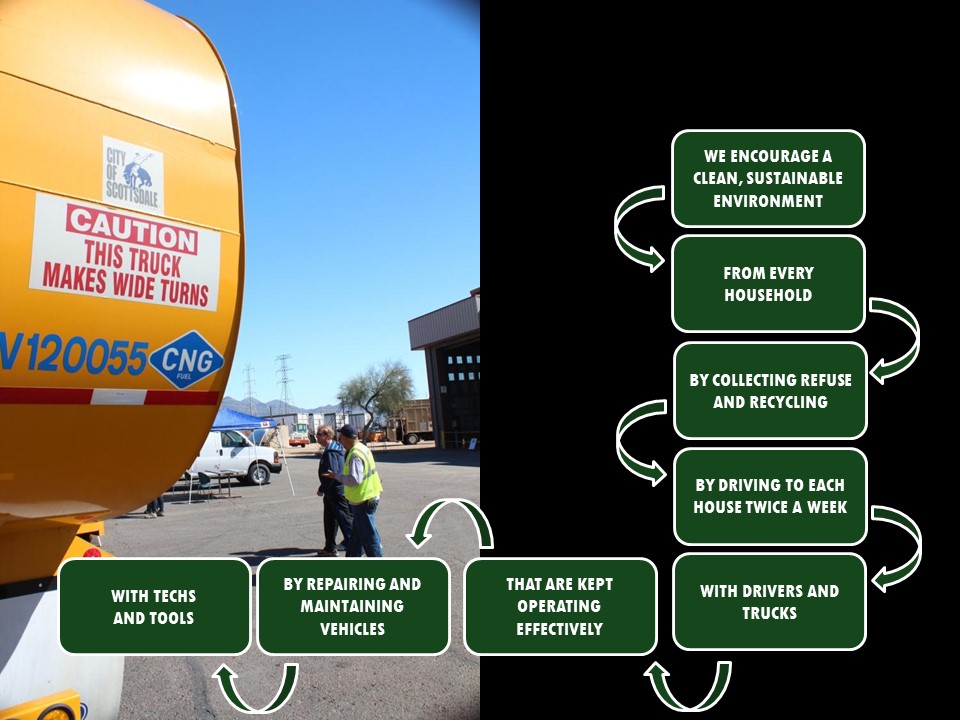
Trash and Recycling with HR Support – We encourage a clean, sustainable environment, from every household, by collecting refuse and recycling, by driving to each house twice a week, with drivers and trucks, with qualified drivers, by recruiting applicants, with analysts, computers and websites.
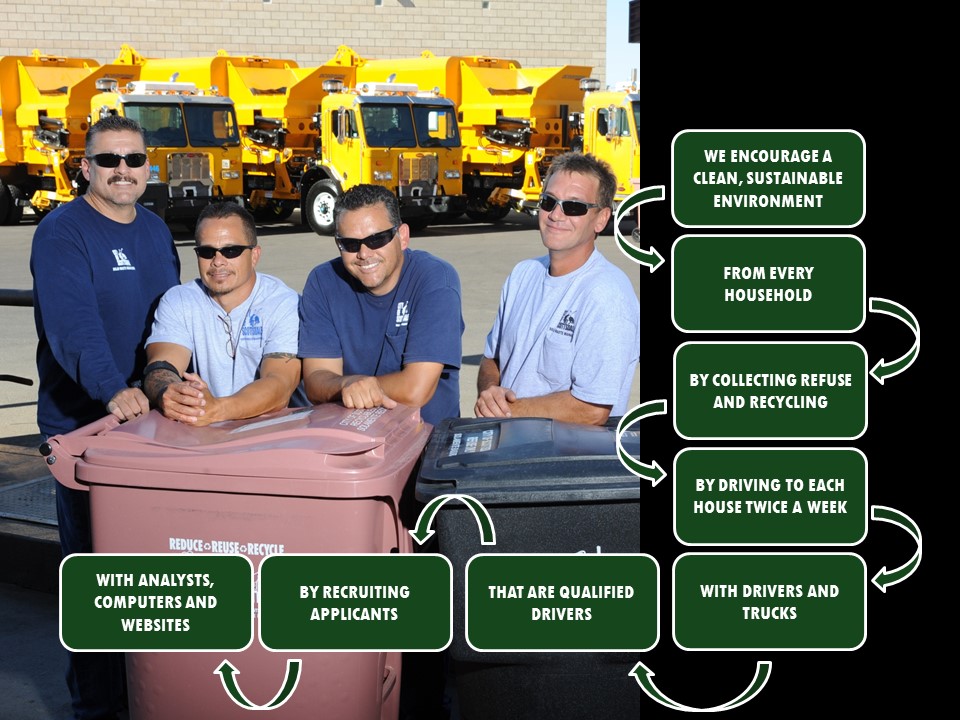
Human Services – We promote self-sufficiency and support independent living, by helping residents avoid eviction, foreclosure and utility termination, by connecting them with emergency assistance and other resources, by meeting clients, with social workers.
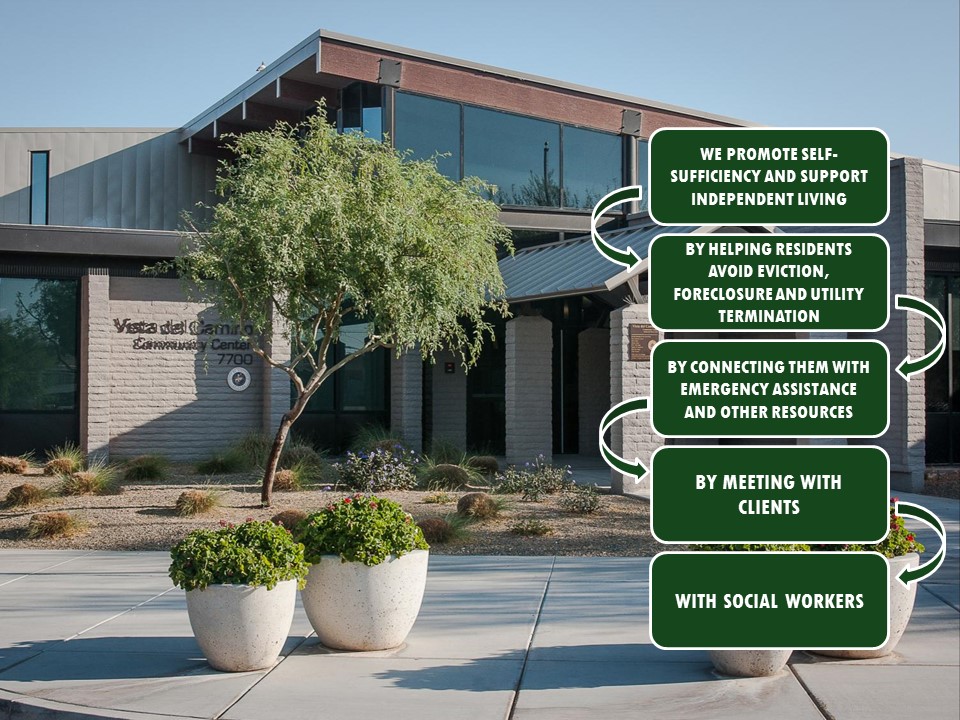
Youth Sports Programs with Field Maintenance Support – We improve overall health and wellness, by providing organized physical activity, by offering youth sports programs, by planning and hosting practices and games, with recreation staff, funding and fields, on safe and well-maintained fields, mowed and fertilized, by staff and mowers.
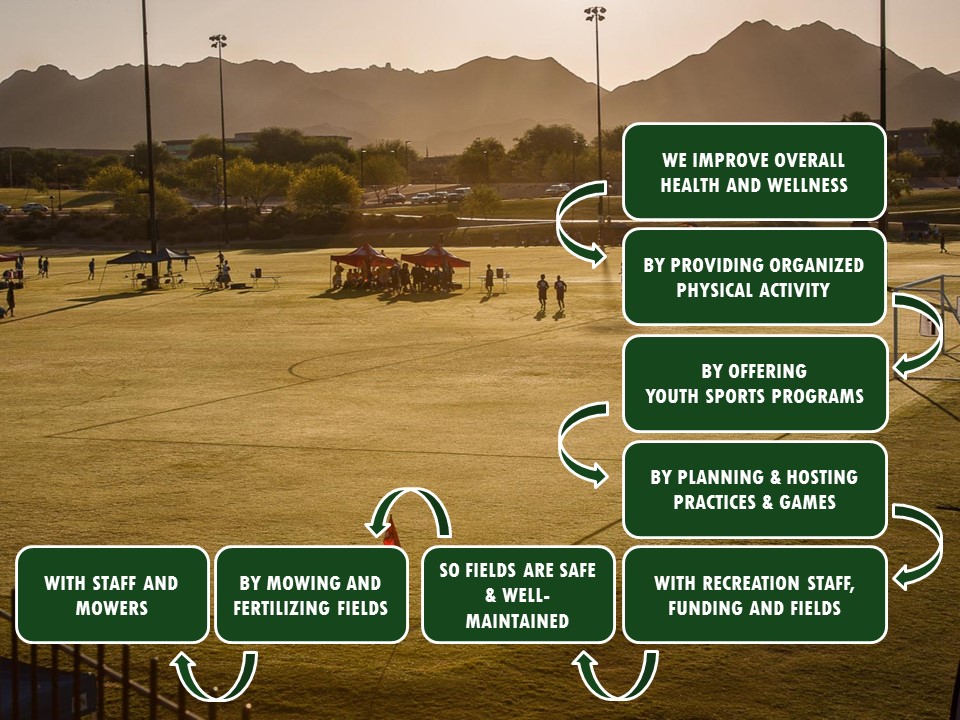
Library Programs – We create an informed, literate and engaged community, by giving residents access to information, knowledge and ideas, by providing materials for use by the community, by selecting and purchasing books and electronic resources, with staff, funds and technology.

Traffic Management – We avoid collisions, by discouraging unreasonable speeds and alerting drivers to potential hazards, by keeping signals and signage operational, by repairing and maintaining signs and signals, with employees and equipment.
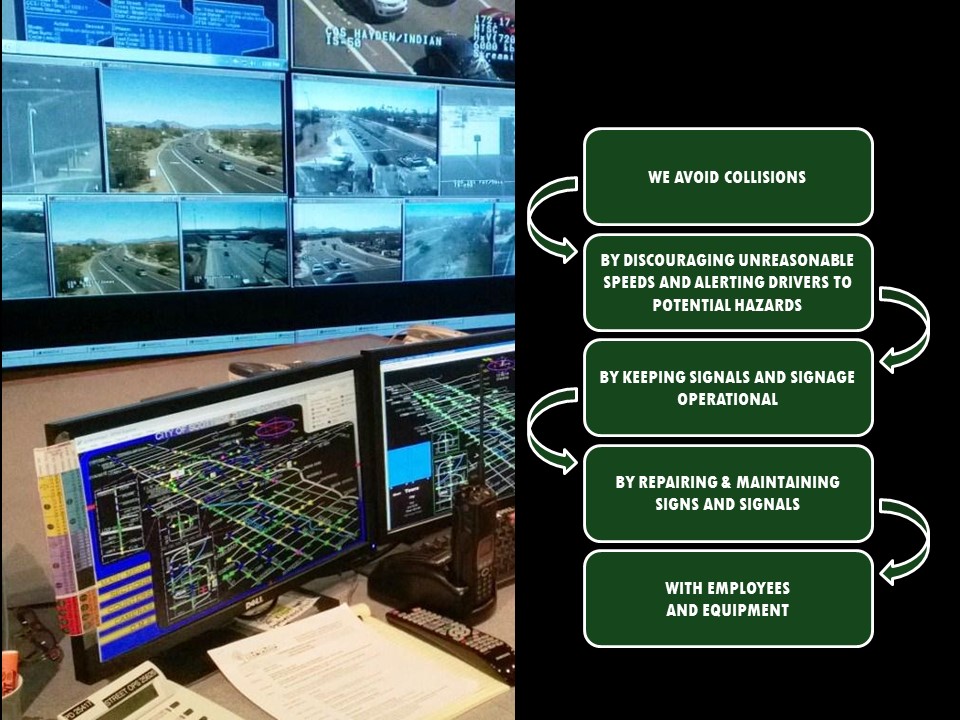
Traffic Enforcement – We manage traffic to avoid collisions and discourage unreasonable speeds, so that travel times are reasonable, predictable and collision-free, by issuing traffic citations to those with unreasonable speeds, by enforcing speed limits on streets through regular patrols, with trained officers, vehicles and technology.
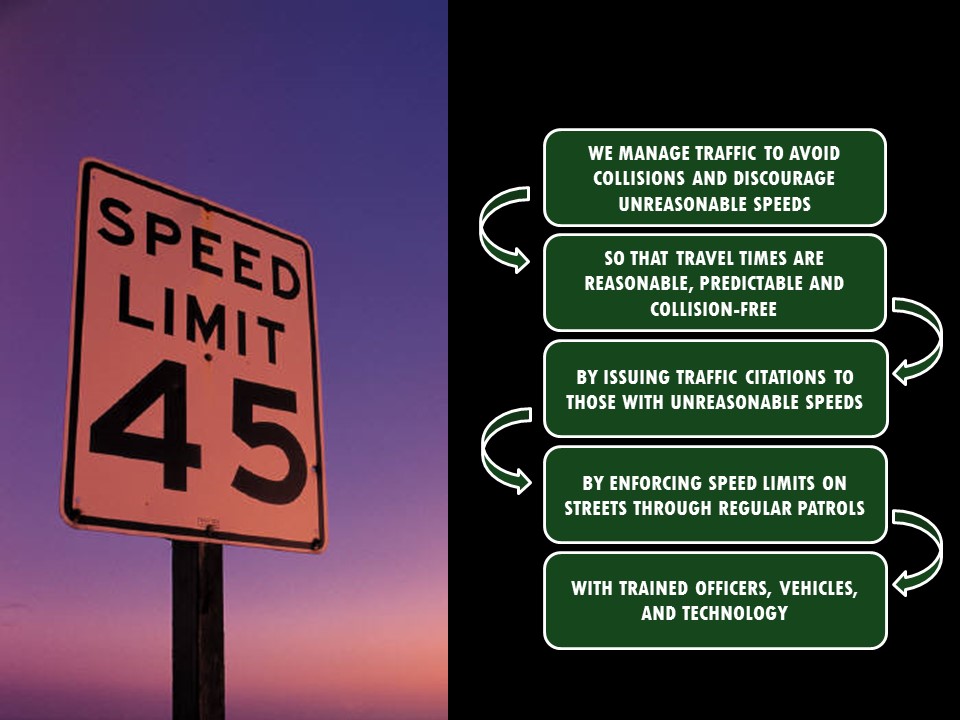
Criminal Investigations – We provide a safe city with a low crime rate, by bringing offenders to justice, by conducting thorough criminal investigations, by responding to calls for service, with police personnel and vehicles.
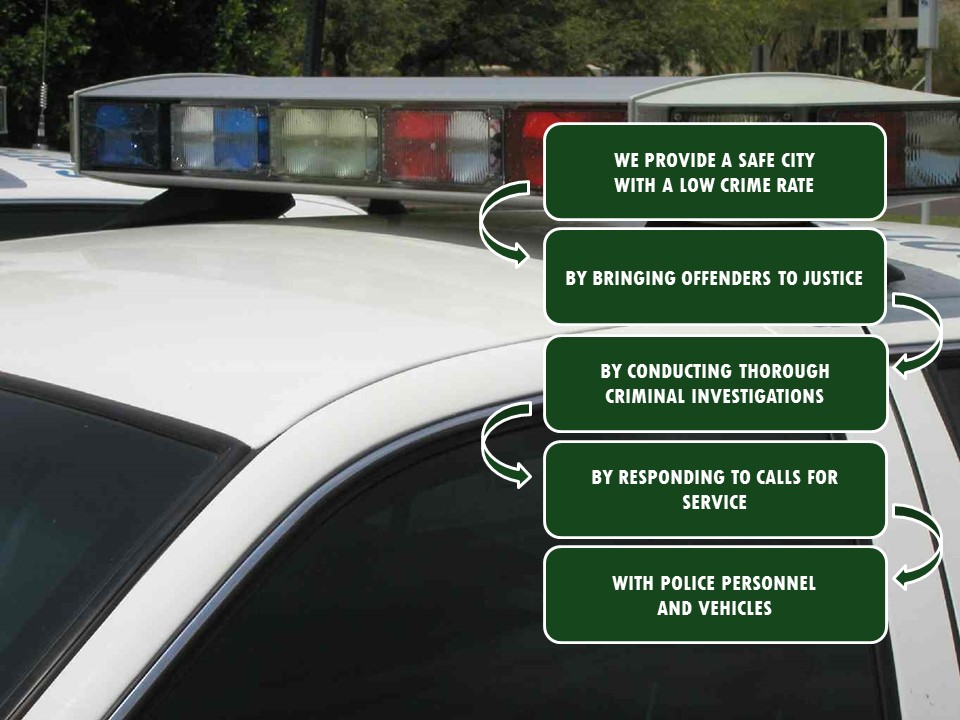
Clearly there are times when you have multiple services, activities or resources achieving the same result. Everything is not linear. This shows how multiple activities and services could lead to the same results.
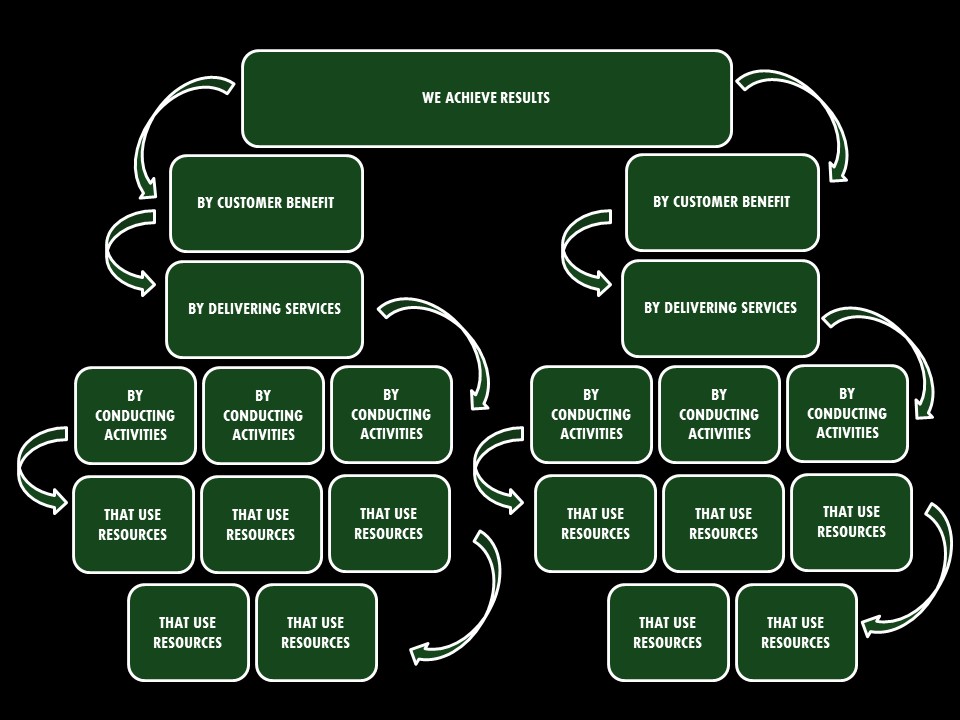
After you figure out your results statement, you can start identifying possible ways that you could measure each, as outlined in this example. These are just possibilities. There are lots of ways you could measure each. You should choose the best palette of measures for your service area. I suggest choosing measures that are most relevant to what you do, are easily understandable to others, and provide a complete picture of what you do.
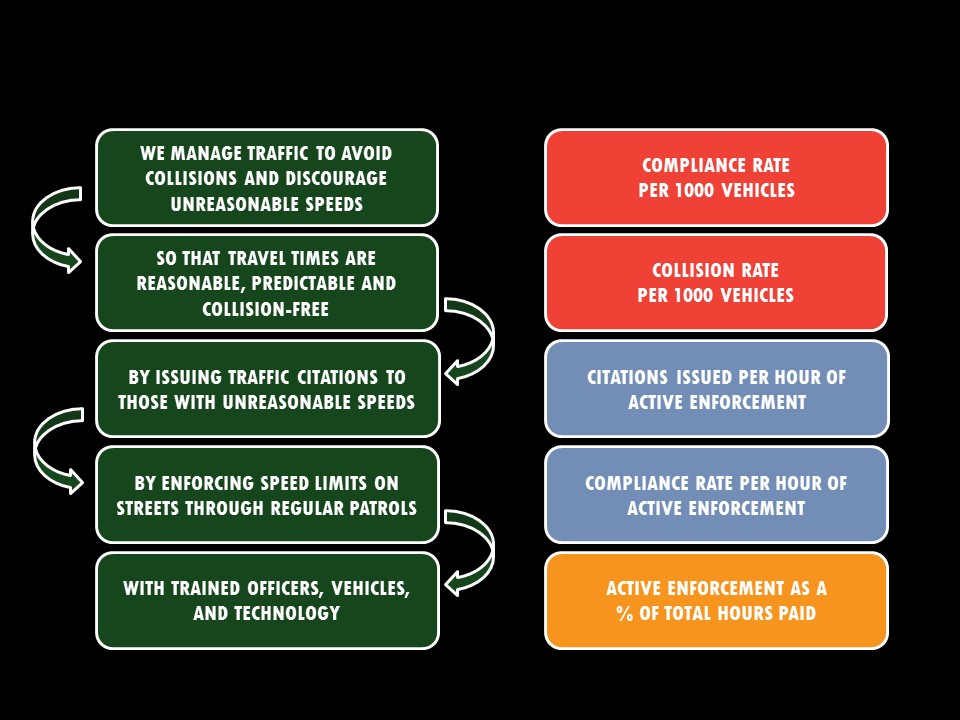
Peter Drucker, recognized as the father of modern management – is said to have stated this maxim –
“What gets measured, gets managed.”
This is a mantra, to be sure. Employees pay attention to what you measure. Employees pay attention to what is important to management. Make sure you pay attention to what matters most.
Focus on results.
Brent Stockwell is an assistant city manager for Scottsdale, Arizona, where he has worked since 2002 in a variety of roles, and also worked for Mesa, Arizona and Federal Way, Washington. He earned degrees from Kansas State University and the University of Washington. He’s happily married with three kids and a mini-goldendoodle. Brent’s on Twitter, Instagram and LinkedIn.
All views and opinions expressed in this post are solely those of the author and do not reflect the views and opinions of his employer.
